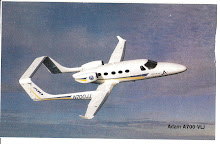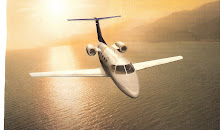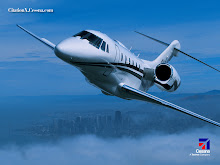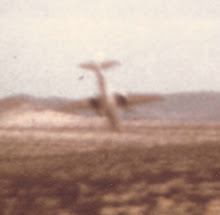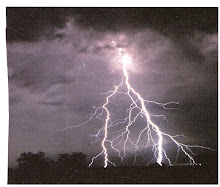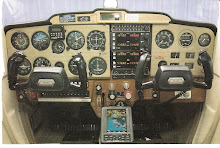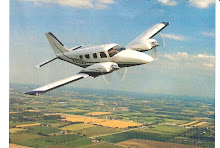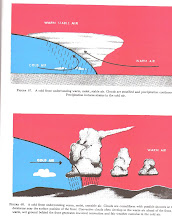Hi Readers: As you've probably noticed, Part II has been a long time coming. Reason? All through the month of March 2008 NTSB has been revising the February list of accidents as originally reported. We'll have to assume that reports had not been submitted on time because of Winter and severe weather conditions across the Continental U.S. And, of course, we'll have to realize that NTSB has been 'up to its ears' in investigations and reports. Some of the current aviation problems being reported, such as "overflown airplanes ", lack of airplane inspections, the FAA budget situation, and the lack of FAA controller and technical personnel has not helped our total aviation safety either.
To set the record straight, the total February 2008 aircraft accidents are now 88 instead of 53, and 7 incidents instead of 6. There are now 25 fatal accidents instead of 21, and there are 63 nonfatal accidents instead of 34 (quite an increase), and the fatalities increased from 39 to 57. The majority of both fatal and nonfatal accidents were weather-associated and indicated winter weather problems involving airports, takeoff, landing, and inflight operations. In fact, there are indications that pilots are either not being informed or are not considering winter weather conditions concerning runways and taxiways, and takeoff, landing, and inflight operations. Also, since I started my accounting and analysis of aircraft accidents in early 2007, there has been an increase in sport flying, and a striking increase in experimental and amateur-built aircraft flying - unfortunately an increase in accidents and problems of airplane airworthiness and power outages.
Of the 25 fatal accidents (accounting for 57 fatalities) the majority were loss of control, under both VFR and IFR conditions, day and night, on X-C flights of 40 to 1600+ miles (mostly 200-300 miles), and weather associated, about half without a flight plan. Why are pilots so reluctant to file a flight plan? In a hurry, necessity to check the weather, flight too short, I'll climb above it, no reporting? Here lies a basic problem in flight planning. Before I get into the lecture mode, I'll say this. Pilots must start flight planning based on the route of flight and the destination weather (considering an alternate destination), get the best weather briefing possible, file a flight plan, and start checking the weather ahead after climb to cruise. Amen.
There were 53 nonfatal accidents with the usual myriad cause indications - power loss or failure - (followed by loss of control), power or telephone line strikes, landings on snow and ice, bird strikes, severe turbulence, prop strikes on landing, etc.
Of the fatal accidents, of note was a Raytheon C90A (6 fatal) accident on 2-1-08. The aircraft impacted terrain near the Mt. Airy, North Carolina airport following loss of control after a GPS RNAV "missed approach" under IFR conditions. Witnesses reported rain, low cloud ceilings, and fog in the local area. This is an interesting accident in that the details indicate that the insrument-rated commercial pilot did everything "right", up to a point, and then "lost it". It was reported that the pilot had a total of 780 flight hours. It will be interesting to know the pilot's instrument time, time in this airplane, number of instrument approaches made previously, and the GPS instrumentation installed in the airplane. We'll wait until all the facts are in - this loss of control could have been precipitated by a number of factors such as fuel starvation (although there was evidence of fuel), instrument failure, interference in the cockpit, pilot proficiency, et cetera.
Another interesting accident occurred on 2-1-08 involving a Cessna Citation 525 and an inflight loss of control in IFR conditions following takeoff from Augusta, Maine on a X-C flight to Lincoln, Nebraska. The instrument-rated female pilot filed an IFR flight plan for night flight with the FSS and received a standard weather briefing (whatever that was). The pilot and passenger then departed from the snow-covered ramp area and was observed taxiing over ground covered with snow and ice to R/W 35. The weather conditions had turned from light snow to freezing rain. The pilot subsequently, after taxiing across a ditch, taxiied on to R/W 17 (the active R/W) and made takeoff. After takeoff the pilot contacted ATC and reported at 1,000' climbing to
10,000'. One minute later she advised "we've got an attitude indicator failure", subsequently announcing they were not certain which way they were turning. The aircraft impacted terrain 6 miles SSW of Augusta at flight speed. One can only conclude that this flight, under IFR and night conditions must have been compelling. The temperature and dewpoint temperature (not reported) had to be below zero and indicative of serious icing conditions.
There were other fatal accidents, of note for serious errors. For now, let me conclude that pilots must be more weather-conscious in both VFR and IFR flying. Plan for the weather and fly by the weather!
Thanks for listening. R.S.
Friday, March 28, 2008
Monday, March 17, 2008
Summary Of February 2008 Aircraft Accidents & Incidents - Part I
Hi Readers: A bit of aviation history first - women are very much a part of Aviation - France's Le Barrone De' Larchoe became the first certificated woman pilot in March 1910; and NASA began the Space Shuttle Program in March 1972.
Now the summary of the February 2008 aircraft accidents and Incidents. There were no reports of accidents for 2-14, 2-19, and 2-25, and, of course, February was a month of 29 days.
There was a total of 58 U.S. accidents and incidents. There was 6 incidents overall - 5 U.S. There were 21 fatal accidents (1 non-U.S.), accounting for 39 fatalities. There were 34 nonfatal accidents.
There were 3 non-U.S. occurrences, 2 fatal accidents and a B-737 incident in Helsinki, Finland - no injury - when the aircraft clipped the right wingtip of another aircraft after landing. The other two occurrences involved a Beech 95-55 impacting terrain after a loss of engine power on a x-c evening flight in France. Injuries were 1 fatal, 1 serious injury. The other, a PA-28R-200 impacted terrain during a day x-c flight. Reduced visibility in the area was reported.
Of the remaining 5 incidents, there were no injuries except for the incident of Southwest Airlines at Las Vegas, Nevada in which a B-737-300 encountered severe turbulence during descent for landing in a day VFR flight. Five passengers and one flight attendant sustained minor injuries when the seat belt fittings failed and separated. The other incidents involved a McDonnell Douglas MD-88 bird strike on a visual approach to Bergstrom International at Austin, Texas. A Mesa Airlines Bombardier CL-600 (dba as GO') overflew its destination airport at Hilo, Hawaii by 15 miles while in morning cruise flight. The pilots reversed course and landed at Hilo. A functional check of the pressurization system and carbon monoxide exposure proved negative. A Hawker Beech 99, operated by Suburban Air Freight, encountered inflight fire behind the instrument panel during a night VFR x-c flight.
The remaining incident invvolved a student pilot runway incursion at St. Augustine, Florida, following night VFR flight from DeLand, Florida. The student pilot requested to taxi back to the active runway (R/W31) for departure, after landing on R/W31, and became confused. In response, the contract local tower controller instructed him to taxi via R/W20, taxiing on B to B4. The student pilot progressed past taxiway B4, and then requested the tower controller to provide progressive taxi instructions. The tower controller then instructed the student pilot to taxi on to R/W6 (which was not in use) and to hold short on R/W31. He then stated, "R/W31, cleared for takeoff." The student pilot thought he was on R/W31 and cleared for takeoff. He then stated "cleared for takeoff". The pilot then started takeoff on R/W6 from the intersection of R/Ws 6 and 31, with approximately 200 feet of runway remaining. The aircraft was flown off R/W6 into an intercoastal waterway. This accident should never have happened. The errors here are obvious and the flight planning and execution was at its worst. The contract tower controller did not help with his obvious assumptions of the student pilot, even if he had known it was a student pilot involved.
There were 5 Part 135 Air Taxi occurrences - one an incident, one a fatal accident, and 3 nonfatal accidents. The fatal accident involved an air transport certificated pilot in a PA-30 aircraft contacting terrain during a day x-c VFR flight under power at low altitude. Of the remaining nonfatal Part 135 accidents, one involved a Cessna 210L night main landing gear collapse at Tampa International airport, Florida during VFR landing conditions. Examination revealed that the right main landing gear plunger of the down-and-lock switch was misaligned and had malfunctioned. In another, a Cessna P210N, the left main landing gear collapsed during a night landing roll at Carefree, Arizona. The accident is being investigated. The remaining Part 135 accident involved a Cessna 425 impacting a runway sign during taxi for takeoff on an icy Taxiway at Cahokia, Illinois.
Part II will summarize the 21 fatal and 34 nonfatal accidents of February 2008 for indicated causes and corrective action.
Thanks for listening. R.S.
Labels:
bird strike,
gear collapse,
inflight fire,
runnway incursion,
turbulence
Saturday, March 8, 2008
My Hindenburg Article- And I have an Aviation Novel for Sale
Hi Readers: Let's take a break from aircraft accidents and aviation problems and let me tell you about my article Eye Witness to Disaster in the April 2008 issue of the Flight Journal magazine. This is my story of the Hindenburg Fire (German Zeppelin crash) at Lakehurst, New Jersey in May 1937. I was on the airfield, with others, rescuing survivors. I was 19 years old at the time and was slated for U.S. Navy duty in the U.S. dirigible Los Angeles. Many of you may not remember the Hindenburg or have been around to remember.
Flight Journal is a class A monthly Aviation Adventure magazine with many pictures and articles on past and current aircraft, edited by Budd Davisson and Roger Post, Jr., publisher Air Age Media, www.flightjournal.com, toll-free customer service (800) 442-1871. I'm not in the business of promotion, except for Aviation and Safety, but I think you would enjoy reading this issue and my story. Robert Shaw.
New subject: I must tell you, also, that I have a published aviation novel, Justin's Way Back, by Robert Shaw, for sale. I had only a few remaining copies, however, a few days ago 160 of the books (presumably lost) were found. So now they are for sale at $12.95 per copy plus postage. It's all about an Airline Captain and the Boeing 777 airplane and some problems. If your aviation-oriented and love flying, you'll like this one. E-mail me at roberthshaw@sbcglobal.net or telephone (209) 238-3450.
Thanks for listening. Robert Shaw.
Flight Journal is a class A monthly Aviation Adventure magazine with many pictures and articles on past and current aircraft, edited by Budd Davisson and Roger Post, Jr., publisher Air Age Media, www.flightjournal.com, toll-free customer service (800) 442-1871. I'm not in the business of promotion, except for Aviation and Safety, but I think you would enjoy reading this issue and my story. Robert Shaw.
New subject: I must tell you, also, that I have a published aviation novel, Justin's Way Back, by Robert Shaw, for sale. I had only a few remaining copies, however, a few days ago 160 of the books (presumably lost) were found. So now they are for sale at $12.95 per copy plus postage. It's all about an Airline Captain and the Boeing 777 airplane and some problems. If your aviation-oriented and love flying, you'll like this one. E-mail me at roberthshaw@sbcglobal.net or telephone (209) 238-3450.
Thanks for listening. Robert Shaw.
Thursday, March 6, 2008
January 2008 Aircraft Accidents and Incidents - Part II
Hi Readers: As previously reported in Part I, this is a summary of the January 2008 fatal acidents (both U.S. and non-U.S.) based on the facts available. NTSB is in a continual process of the investigation of accidents, and the probable causes will not be available for some time yet. As stated in Part I, The fatal accidents (more often than not) usually indicate the more serious safety of flight problems and indicate the areas for specific study. The january fatal accidents varied as to time of flight, VFR-IFR meteorological conditions, phase of flight, type of flight operations, pilot classification, proficiency or mission, ad infinitum. There were 22 fatal accidents during the period. Beginning with a fatality-injury count, a 6-fatal Cessna 210M accident on 1-11-08, a day charter flight at Enos airport, Windhaek, Nambia. Engine power was lost on takeoff and the airplane crashed in a residential area. The pilot and the 5 passengers did not survive the crash and post-crash fire. The next, a 4-fatal accident, involved a Cessna 340, operated by a private pilot, impacted terrain in day VFR x-c flight during an approach to R/W27 at Keller Field, Port Clinton, Ohio on the downwind leg of the traffic pattern. The airplane was observed in slow flight to stall and enter a left spin with the landing gear extended. There was some evidence of fuel at the crash site, but both engine propellers were bent rearward indicating lack of power. Weather conditions in the area were reported as VFR. The temperature was 2 degrees C. and the dewpoint temperature was -4 degrees C.
A 6-fatal accident occurred on 1-5-08 when a Piper PA-31-350 impacted ocean water, a loss of control shortly after takeoff from R/W 36 at Kodiak, Alaska in daylight. The flight was a on-demand charter flight of Servant Air, Inc. to transport a group of fishermen from Kodiac to Homer for a Russian Christmas. Many lived in the Homer, Alaska community. A surviving passenger related that the forward baggage door popped open (in the nose) while over the departure end of the runway. The pilot made a shallow right turn, presumably to return to the airport. The baggage door then swung full open. As th e airplane continued the right turn, it rolled sharply to the right and entered a rapid nose-low descent. The airplane disintegrated on impact and sank 200 yards offshore in shallow water. The Kodiak METAR weather report cited wind at 300 degrees, 17 knots with gusts to 26 knots, with the temperature and dewpoint at 46 and 44 degrees C. The air transport pilot and 5 passengers sustained fatal injuries, 3 passengers were seriously injured, and there was one minor injury. Indications are that the opening baggage door resulted in an airfoil problem leading to a stall and loss of control.
A 3-fatal accident occurred on 1-12-08 when a Cessna 172L, piloted by a private pilot, approached the Clearwater airport, Florida for a left downwind for R/W22. In communication with the Tower Controller, the pilot was cleared to land and acknowledged. A witness on the ramp observed the airplane flying at an estimated altitude of 100 feet, then observed a 90-degree bank to the right, followed by a 45-degree roll to the left, followed by a wings level attitude. The airplane was then observed in a 10-15 degree noseup attitude, followed by a stall and a descent in a left, nose-low and erratic attitude. The pilot and 2 passengers were fatally injured.
On 1-12-08 an Italian-registered Piper PA-28 impacted terrain approaching the Treviso, Italy airport under VFR conditions. The pilot and a passenger were fatally injured. On 1-23-08 a U.S. registered and British-operated Beech 58P was destroyed when the airplane impacted water approximately 7 nm north of Cherbourg, France during a day VFR x-c flight. There were 2 fatalities and one serious injury. On 1-15-08 a non-U.S. Beech C-90B, during a day training flight, crashed at Port Said, Egypt. There was a post-crash fire and both pilots were fatally injured. On 1-19-08, an experimental category airplane, an Air Creation Clipper, crashed in desert terrain 8 miles NW of Green Valley, Arizona. The airplane appeared to have descended in a steep nose-down attitude. The student pilot and a flight instructor sustained fatal injuries. On 1-27-08, an amateur-built Free Bird Sportlite 103 impacted terrain near McCullough, Alabama during day flight. The non-certificated pilot was fatally injured. The airplane, a 2-seat tandum, was purchased by the pilot over the internet. A center-of-gravity problem was indicated. The circumstances regarding this airplane was very involved, and the pilot had only 38 hours ground instruction, 25 hours of flight instruction, and had passed a written FAA examination prior to solo.
On 1-16-08 an Air Taxi Aero Commander 500B crashed on a night IFR flight from Tulsa, Oklahoma to the Wiley Post airport following a loss of control after takeoff. The pilot reported that he was having a gyro problem. The airplane was observed on radar, and the pilot was given instructions to turn left to 300 degrees. The pilot initiated a right turn and was informed by Tulsa Approach Control of the mistake. The airplane continued in a steep right turn and disappeared from the radar scope. The weather at the time of the accident was overcast at 1,900 feet, visibility 3 miles in freezing drizzle and snow, temperature 32 degrees F. with winds 300 degrees at 18 knots, gusting to 21 knots. The pilot was fatally injured.
A Hawker Beech 58, on 1-16-08, crashed during a night x-c VFR flight following its climb from Cleveland, Ohio airport, impacting Lake Erie. The airline transport pilot sustained fatal injuries. There were no details. On 1-3-08 a line technician was struck and killed by the moving propeller of a Pilatus PC-12/45 airplane parked on the ramp, awaiting departure, at the Wiley Post airport in Oklahoma City in the early morning hours. The commercial pilot and the 7 passengers aboard were not injured. The airplane was operated by the Cardiovascular Associates, a medical group. A non-U.S. Bell 206B helicopter was destroyed when it impacted terrain under unknown circumstamces near Zuzenhausen, Germany. The passenger was fatally injured and the pilot sustained minor injuries.
All in all, January 2008 was not a good month, with some very bad weather over the continental U.S. We'll hope for an improvement in the month of February. Keep flying - safely.
Thanks for listening. R.S.
A 6-fatal accident occurred on 1-5-08 when a Piper PA-31-350 impacted ocean water, a loss of control shortly after takeoff from R/W 36 at Kodiak, Alaska in daylight. The flight was a on-demand charter flight of Servant Air, Inc. to transport a group of fishermen from Kodiac to Homer for a Russian Christmas. Many lived in the Homer, Alaska community. A surviving passenger related that the forward baggage door popped open (in the nose) while over the departure end of the runway. The pilot made a shallow right turn, presumably to return to the airport. The baggage door then swung full open. As th e airplane continued the right turn, it rolled sharply to the right and entered a rapid nose-low descent. The airplane disintegrated on impact and sank 200 yards offshore in shallow water. The Kodiak METAR weather report cited wind at 300 degrees, 17 knots with gusts to 26 knots, with the temperature and dewpoint at 46 and 44 degrees C. The air transport pilot and 5 passengers sustained fatal injuries, 3 passengers were seriously injured, and there was one minor injury. Indications are that the opening baggage door resulted in an airfoil problem leading to a stall and loss of control.
A 3-fatal accident occurred on 1-12-08 when a Cessna 172L, piloted by a private pilot, approached the Clearwater airport, Florida for a left downwind for R/W22. In communication with the Tower Controller, the pilot was cleared to land and acknowledged. A witness on the ramp observed the airplane flying at an estimated altitude of 100 feet, then observed a 90-degree bank to the right, followed by a 45-degree roll to the left, followed by a wings level attitude. The airplane was then observed in a 10-15 degree noseup attitude, followed by a stall and a descent in a left, nose-low and erratic attitude. The pilot and 2 passengers were fatally injured.
On 1-12-08 an Italian-registered Piper PA-28 impacted terrain approaching the Treviso, Italy airport under VFR conditions. The pilot and a passenger were fatally injured. On 1-23-08 a U.S. registered and British-operated Beech 58P was destroyed when the airplane impacted water approximately 7 nm north of Cherbourg, France during a day VFR x-c flight. There were 2 fatalities and one serious injury. On 1-15-08 a non-U.S. Beech C-90B, during a day training flight, crashed at Port Said, Egypt. There was a post-crash fire and both pilots were fatally injured. On 1-19-08, an experimental category airplane, an Air Creation Clipper, crashed in desert terrain 8 miles NW of Green Valley, Arizona. The airplane appeared to have descended in a steep nose-down attitude. The student pilot and a flight instructor sustained fatal injuries. On 1-27-08, an amateur-built Free Bird Sportlite 103 impacted terrain near McCullough, Alabama during day flight. The non-certificated pilot was fatally injured. The airplane, a 2-seat tandum, was purchased by the pilot over the internet. A center-of-gravity problem was indicated. The circumstances regarding this airplane was very involved, and the pilot had only 38 hours ground instruction, 25 hours of flight instruction, and had passed a written FAA examination prior to solo.
On 1-16-08 an Air Taxi Aero Commander 500B crashed on a night IFR flight from Tulsa, Oklahoma to the Wiley Post airport following a loss of control after takeoff. The pilot reported that he was having a gyro problem. The airplane was observed on radar, and the pilot was given instructions to turn left to 300 degrees. The pilot initiated a right turn and was informed by Tulsa Approach Control of the mistake. The airplane continued in a steep right turn and disappeared from the radar scope. The weather at the time of the accident was overcast at 1,900 feet, visibility 3 miles in freezing drizzle and snow, temperature 32 degrees F. with winds 300 degrees at 18 knots, gusting to 21 knots. The pilot was fatally injured.
A Hawker Beech 58, on 1-16-08, crashed during a night x-c VFR flight following its climb from Cleveland, Ohio airport, impacting Lake Erie. The airline transport pilot sustained fatal injuries. There were no details. On 1-3-08 a line technician was struck and killed by the moving propeller of a Pilatus PC-12/45 airplane parked on the ramp, awaiting departure, at the Wiley Post airport in Oklahoma City in the early morning hours. The commercial pilot and the 7 passengers aboard were not injured. The airplane was operated by the Cardiovascular Associates, a medical group. A non-U.S. Bell 206B helicopter was destroyed when it impacted terrain under unknown circumstamces near Zuzenhausen, Germany. The passenger was fatally injured and the pilot sustained minor injuries.
All in all, January 2008 was not a good month, with some very bad weather over the continental U.S. We'll hope for an improvement in the month of February. Keep flying - safely.
Thanks for listening. R.S.
Sunday, March 2, 2008
January 2008 Aircraft Accidents and Incidents - Part I
Hi Readers: After a 2-week hospital stay, I'm back on track.
There were 89 aircraft accidents in January 2008, of which 8 were non-U.S. There were 5 incidents of which 3 were non-U.S. A Bell 212 helicopter, non-US. accident, injuries not available was also reported. There were no reports of accidents for 1-20-08.
There were 22 fatal accidents accounting for 62 fatalities. Of the non-U.S. fatal accidents, a Beech 200 airplane crashed in Angola (13 fatal); a Cessna 210M crashed in Nambio (6 fatal); a Beech 58P crashed in Cherbourg, France (2 fatal); a Beech C90B crashed in Port Said, Egypt; a Piper PA-28 crashed in Treviso, Italy (2 fatal); and a Bell 206B helicopter crashed in Zuzenhausen, Germany (1 fatal).
There were 3 incidents during the period: One, an Air Canada Airbus 319 experienced a turbulence upset enroute from Toronto to Victoria, Canada, while climbing from FL 360 to 370. The airplane rolled uncommanded 36 degrees right, followed by a 57 degree roll to the left, then pitching nosedown. With 5 crew and 83 passengers aboard, there were 11 minor injuries. In another incident, American Air Lines FLT 1738, a B-757 on a night VFR flight from San Juan, Puerto Rico to Philadelphia had to declare an emergency due to smoke in the cockpit, landing at Palm Beach Intl airport. The pilot, First Officer, 3 of the Flight Attendants, and one passenger were transported to a hospital. While trying to determine the source of the smoke, the First Officer noticed that his windshield began to crack and small chards off glass began to impact him. During descent the windshield shattered, blocking outside visibility. In another incident an American Star Jet Charter B-737 experienced loss of directional control on exiting the landing runway at Lincoln, Nebraska on a day flight.
Of note, a non-U.S. British Airways accident occurred on 1-17-08 when a B-777 landed short of R/W 27L at Heathrow Intl airport. The 136 passengers deplaned by the emergency slide exits, with only 2 minor injuries. Th UK Air Accident Investigation Board is investigating. Also, of note, a Beech 200 (non-U.S.) charter flight crashed in mountainous terrain near Huambo, Angola during approach to land in IFR conditions. Thirteen fatalities were reported.
A 10-fatal mid-air collision occurred on 1-20-08 in daylight btween a Cessna 150M and a Cessna 172N, (both high-wing monoplanes) at the Corona, Ca. municipal airport (uncontrolled). The Cessna 150 was on the downwind leg for R/W25 and the Cessna 172 was entering a LH traffic pattern for R/W25. The commercial pilot and the passenger in the 172 and the two private pilots in the 150, and a person on the ground were fatally injured. There was no maneuvering prior to the collision. There is indication that the Cessna 150 was contacted from above, and that neither pilot observed the other airplane.
There were 3 helicopter accidents during the period, a Robinson R22 (1 fatal) impacted a Los Angeles freeway at night; a Robinson R44 (2 fatal) collided with the ground while maneuvering in daylight in Florida; and a non-U.S. Bell 212 helicopter crashed in a jungle area near Ketini,Peru, under unknown circumstances. Injuries to the 2-man flight crew and 7 passengers were unknown.
Of the non-fatal accidents during the period, there was a myriad of causes such as forced landing due to engine failure in flight, or on takeoff or landing, both airplanes and helicopters; numerous hard landings and groundloops, many connected with snow and ice conditions. There was one waterloop on landing, and an agriculture accident at night. A PA-28 and a Glastar airplane collided in flight and made it back to the airport. And there was one gear collapse. Of note, a B-757 and a Bombardier airplane, both being pushed back from the terminal at San Francisco, contacted each other at the tail sections. This is a new one on me.
Once again, the reported 22 fatal accidents over the Continental U.S. during the period indicate serious safety of flight problems - not limited to any particular time of flight, phase of flight, weather condition, mission, or pilot classification or proficiency issues. A fatal accident of note was a witnessed daylight breakup of a Fresno, CA.-based Beech V35B in flight over Selma, CA. at about 7,000 feet altitude.
The analysis of these fatal accidents will be covered in detail under PartII of the January 2008 accidents and incidents.
Thanks for listening. R.S.
There were 89 aircraft accidents in January 2008, of which 8 were non-U.S. There were 5 incidents of which 3 were non-U.S. A Bell 212 helicopter, non-US. accident, injuries not available was also reported. There were no reports of accidents for 1-20-08.
There were 22 fatal accidents accounting for 62 fatalities. Of the non-U.S. fatal accidents, a Beech 200 airplane crashed in Angola (13 fatal); a Cessna 210M crashed in Nambio (6 fatal); a Beech 58P crashed in Cherbourg, France (2 fatal); a Beech C90B crashed in Port Said, Egypt; a Piper PA-28 crashed in Treviso, Italy (2 fatal); and a Bell 206B helicopter crashed in Zuzenhausen, Germany (1 fatal).
There were 3 incidents during the period: One, an Air Canada Airbus 319 experienced a turbulence upset enroute from Toronto to Victoria, Canada, while climbing from FL 360 to 370. The airplane rolled uncommanded 36 degrees right, followed by a 57 degree roll to the left, then pitching nosedown. With 5 crew and 83 passengers aboard, there were 11 minor injuries. In another incident, American Air Lines FLT 1738, a B-757 on a night VFR flight from San Juan, Puerto Rico to Philadelphia had to declare an emergency due to smoke in the cockpit, landing at Palm Beach Intl airport. The pilot, First Officer, 3 of the Flight Attendants, and one passenger were transported to a hospital. While trying to determine the source of the smoke, the First Officer noticed that his windshield began to crack and small chards off glass began to impact him. During descent the windshield shattered, blocking outside visibility. In another incident an American Star Jet Charter B-737 experienced loss of directional control on exiting the landing runway at Lincoln, Nebraska on a day flight.
Of note, a non-U.S. British Airways accident occurred on 1-17-08 when a B-777 landed short of R/W 27L at Heathrow Intl airport. The 136 passengers deplaned by the emergency slide exits, with only 2 minor injuries. Th UK Air Accident Investigation Board is investigating. Also, of note, a Beech 200 (non-U.S.) charter flight crashed in mountainous terrain near Huambo, Angola during approach to land in IFR conditions. Thirteen fatalities were reported.
A 10-fatal mid-air collision occurred on 1-20-08 in daylight btween a Cessna 150M and a Cessna 172N, (both high-wing monoplanes) at the Corona, Ca. municipal airport (uncontrolled). The Cessna 150 was on the downwind leg for R/W25 and the Cessna 172 was entering a LH traffic pattern for R/W25. The commercial pilot and the passenger in the 172 and the two private pilots in the 150, and a person on the ground were fatally injured. There was no maneuvering prior to the collision. There is indication that the Cessna 150 was contacted from above, and that neither pilot observed the other airplane.
There were 3 helicopter accidents during the period, a Robinson R22 (1 fatal) impacted a Los Angeles freeway at night; a Robinson R44 (2 fatal) collided with the ground while maneuvering in daylight in Florida; and a non-U.S. Bell 212 helicopter crashed in a jungle area near Ketini,Peru, under unknown circumstances. Injuries to the 2-man flight crew and 7 passengers were unknown.
Of the non-fatal accidents during the period, there was a myriad of causes such as forced landing due to engine failure in flight, or on takeoff or landing, both airplanes and helicopters; numerous hard landings and groundloops, many connected with snow and ice conditions. There was one waterloop on landing, and an agriculture accident at night. A PA-28 and a Glastar airplane collided in flight and made it back to the airport. And there was one gear collapse. Of note, a B-757 and a Bombardier airplane, both being pushed back from the terminal at San Francisco, contacted each other at the tail sections. This is a new one on me.
Once again, the reported 22 fatal accidents over the Continental U.S. during the period indicate serious safety of flight problems - not limited to any particular time of flight, phase of flight, weather condition, mission, or pilot classification or proficiency issues. A fatal accident of note was a witnessed daylight breakup of a Fresno, CA.-based Beech V35B in flight over Selma, CA. at about 7,000 feet altitude.
The analysis of these fatal accidents will be covered in detail under PartII of the January 2008 accidents and incidents.
Thanks for listening. R.S.
Labels:
407,
Air Canada,
B-757,
B-777,
Bell 206,
Bell 407,
fatalities,
GA Acdts,
helicopters,
Incidents,
mid-air collision,
roll,
shattered windshield,
turbulence
Subscribe to:
Posts (Atom)

